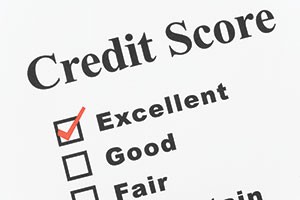Here Is Everything You Ever Wanted To Know About Credit And Credit Cards
By Steve Repak, CFP®
Over the last few years, Americans have been tightening their belts and paying down debt, but unfortunately most of the population is still struggling day-to-day because of the debt they are carrying.
The famous phrase scientia potentia est is a Latin proverb meaning “knowledge is power.” The more one knows, the greater the probability of success. Here is everything you ever wanted to know about credit and credit cards, from A to Z!
Over the last few years, Americans have been tightening their belts and paying down debt, but unfortunately most of the population is still struggling day-to-day because of the debt they are carrying. The famous phrase scientia potentia est is a Latin proverb meaning “knowledge is power.” The more one knows, the greater the probability of success. Here is everything you ever wanted to know about credit and credit cards, from A to Z!
APR is the annual rate of interest you are charged for borrowing money. You will have more money by earning interest instead of paying someone else interest.
Balance Transfers are when you transfer the debt from a one credit card to another, usually to obtain a lower interest rate. Keep in mind that there are usually up-front fees involved, typically 3-5% per transaction, and be careful of the teaser rates, because when they eventually expire, often in as little as six months, the rate reverts back to your contract rate.
Credit Limit refers to the maximum amount a credit card company will allow you to borrow (or charge). Keep in mind that the more you charge and don’t pay off at the end of each month, the lower your credit score.
Debt Consolidation loan is when you consolidate your credit cards or other unsecured debts into a single personal loan, usually at a lower rate. The problem is that many people who consolidate their debt end up with even more debt because they will continue to use the credit cards that were paid off.
Equifax is one of the three major credit bureaus in the U.S. Each time you swipe your credit card, you are borrowing money that you promise to pay back. Your credit score is calculated based on a variety of factors, such as your payment history, current debts, the length of time of your credit history, and any recent applications for new credit, just to name a few. The better your credit rating, the lower the interest you will be charged if you need to borrow money.
Fraud Alert is when a consumer requests an alert message be added to his credit file. When you request a fraud alert, it will remain in your file for 90 days. The purpose for this alert is to notify potential lenders that you think your identity may have been compromised and serves as additional security against identity theft. You can also have an extended fraud alert placed on your file for 7 years if you are an actual victim of identity theft.
Grace Period is the length of time that you have to pray you can come up with the money to make your minimum payment. Kidding aside, it is the amount of time you have to pay your card off in full if you want to avoid a finance charge. Check your credit card statement to verify when the payment is due, and try to pay off the entire balance to avoid any finance charges.
Hard Inquiry is when a potential lender has obtained a copy of your credit report to evaluate your credit application. Too many inquiries within a six month period could possibly lower your credit score.
Interest is the cost of borrowing money. You will have more money if you are earning interest on your money instead of paying someone else interest on money that you have borrowed.
Journaling is a technique used to track your spending. If you ever want to get out of debt, you have to start spending less money than you are making. To find out where you are spending your money you will ask for receipts and write down in your journal exactly what you are spending your money on so you can identify areas that you can cut out or reduce.
KISS is an acronym that stands for Keep It Simple Stupid. If you want to get out of credit card debt, you first have to quit using your credit cards and then start spending less money than you are making. It just doesn’t get much simpler than that.
Late Payment is when you do not pay your credit card bill on time. If you make a payment 30 days or more after the due date, it may be disclosed on your consumer credit report.
Minimum Finance Charge is the minimum interest you will be charged in the event your calculated interest is lower. As an example let us assume the minimum finance charge under your credit card agreement is $1 but the interest that would normally accrue on your outstanding balance is only 50 cents; you will be charged $1 unless you pay your balance in full before the grace period expires.
National Foundation for Credit Counseling is the country’s largest financial counseling organization. It provides information and links to resources to help you manage your debt, such as credit counseling, bankruptcy counseling, and other financial issues.
Opt Out is a choice that a consumer can make to limit the sharing of information, such as opting out of credit offers that you as the consumer have not initiated.
PowerPay.Org is a great website that will help you put together a customized get-out-of-debt plan. You can also develop a spending plan which should be one of the first steps you take if you are serious about eliminating your credit card debt.
Quit charging is what you need to do if you ever want to get out of credit card debt!!
Revolving Credit is a type of credit that does not have a fixed number of payments. Credit cards are a great example of revolving credit. If a consumer has too much revolving credit, it could possibly lower your credit score.
Savings is one of the required items in order to get out of credit card debt. Most emergencies can be resolved with $1000 or less, so you should have a minimum of $1000 in your savings for emergencies before you start paying more towards your debt.
Teaser Rate, also referred as the Introductory Rate, is the annual percentage rate a credit card issuer offers during an initial period. Usually the period must last at least six months. When the initial period ends, many times the annual percentage rate goes to a much higher rate, so be careful.
Utilization Ratio is a formula that compares an individual’s total debt balances to total credit limit. As an example, let’s say you have a credit card with $4000 credit limit and you are carrying a $1000 balance. Your balance ($1,000) divided by the total amount you can borrow ($4,000) equals your utilization ratio (in this case 25%). In other words you have utilized 25% of your total credit. The lower the percentage the better.
A Victim Statement is a valid police report confirming that you have been the victim of identity theft or fraud, and is required in order to place an extended fraud alert on your credit file.
Working Capital is usually associated with a business, but for an individual working capital is the remainder after subtracting your expenses from your income. Hint — this should be a positive number. If you have a negative number, that means you are spending more money than you are earning.
Xanax is an anti-anxiety drug, and many people with debt experience a lot of anxiety because of it. You should not resort to prescriptions in order to cope with your financial situation. Taking control of your situation and making progress toward your goal of getting out of debt is a great anti-depressant on its own!
You care more about your financial well-being than anyone else. Nobody will take charge of your finances for you, and your ultimate success or failure rests squarely on your shoulders. You can rise to the challenge!
Zero Balance is the ultimate goal for you to set for all of your credit card statements. Just as you didn’t get into debt overnight, don’t expect to get out of debt out overnight, but rather, one step at a time.
Knowledge is power, but it is powerless without action. Most of us know what we need to do, but the hard part is putting this knowledge to good use. The key is to have a positive attitude, a realistic plan, and, most importantly, different behaviors. HBM
Steve Repak, CFP® is the author of Author of Dollars & Uncommon Sense: Basic Training for Your Money. For more information, please visit www.dollarsanduncommonsense.com.
Find a Home-Based Business to Start-Up >>> Hundreds of Business Listings.

















































